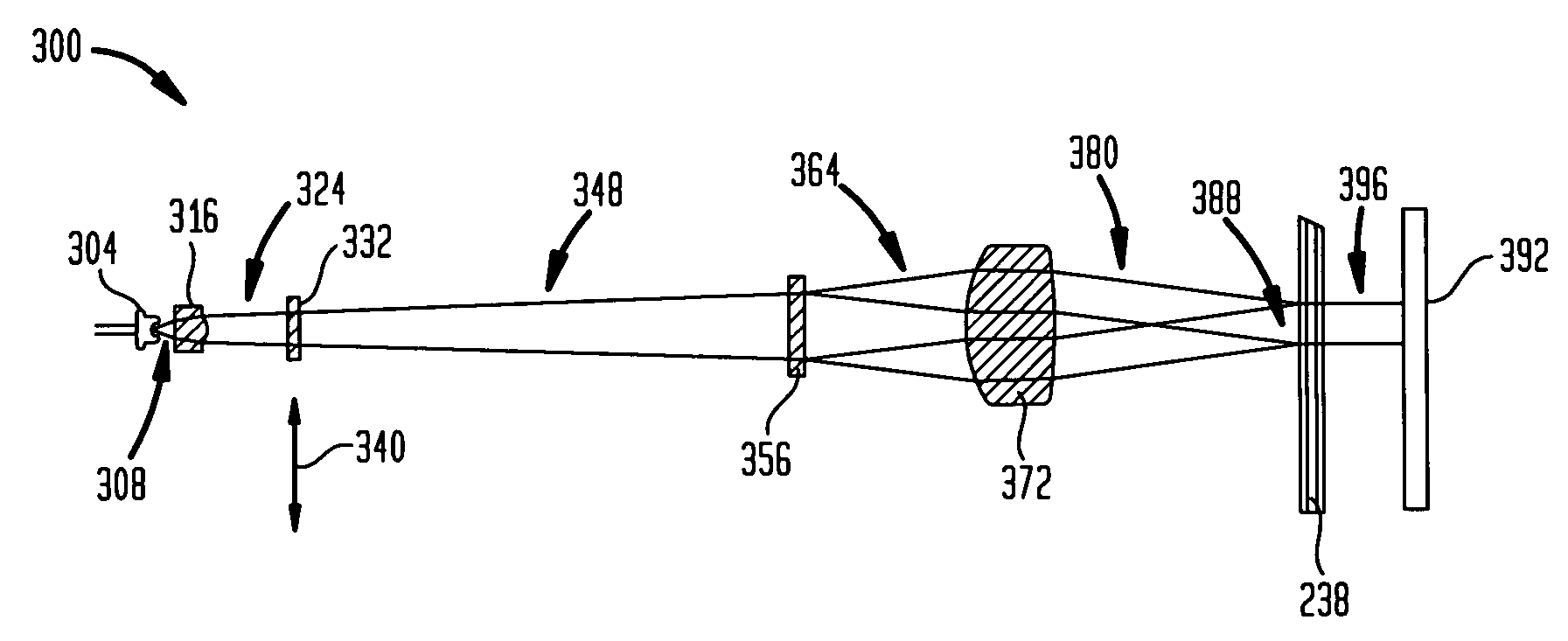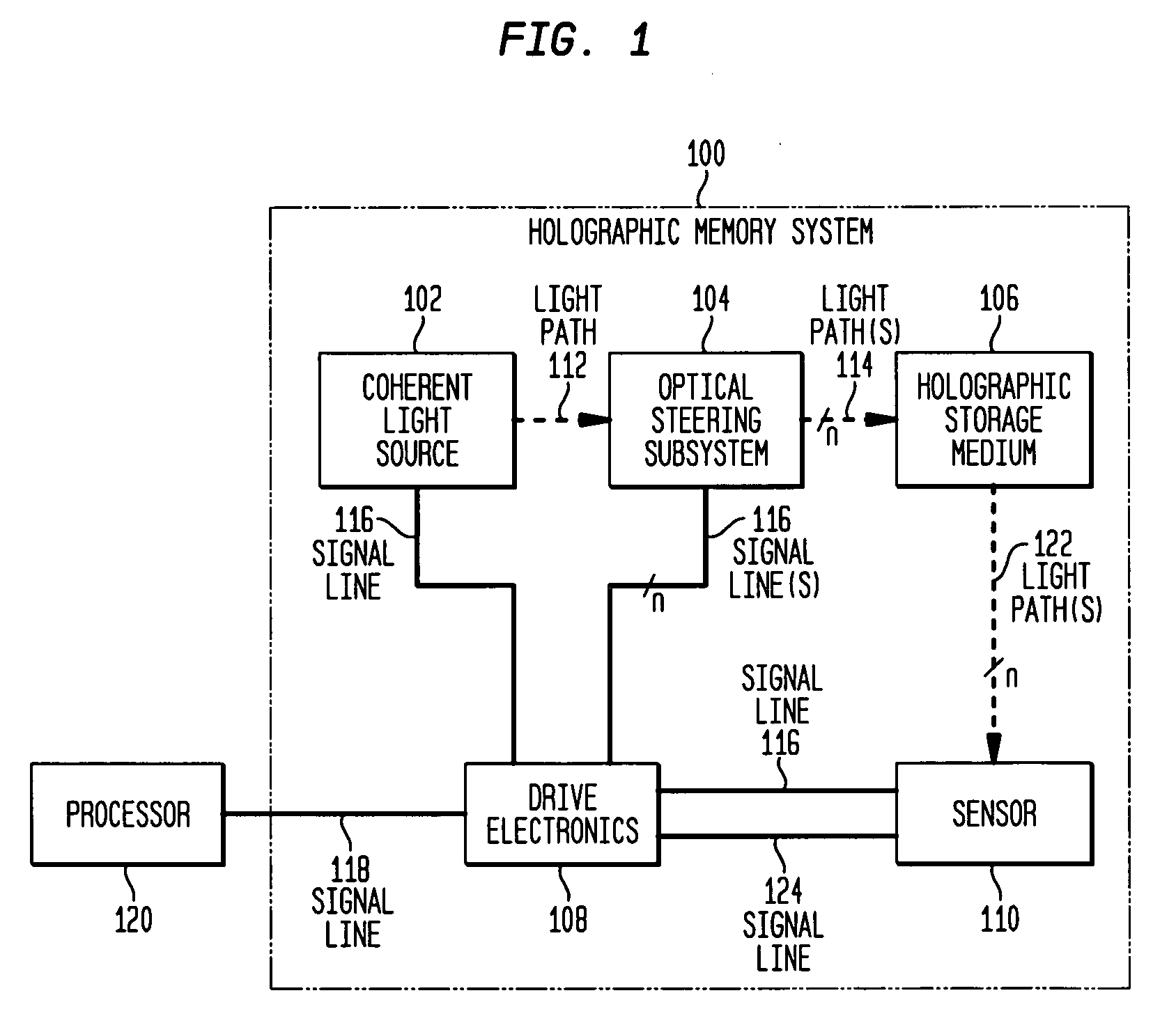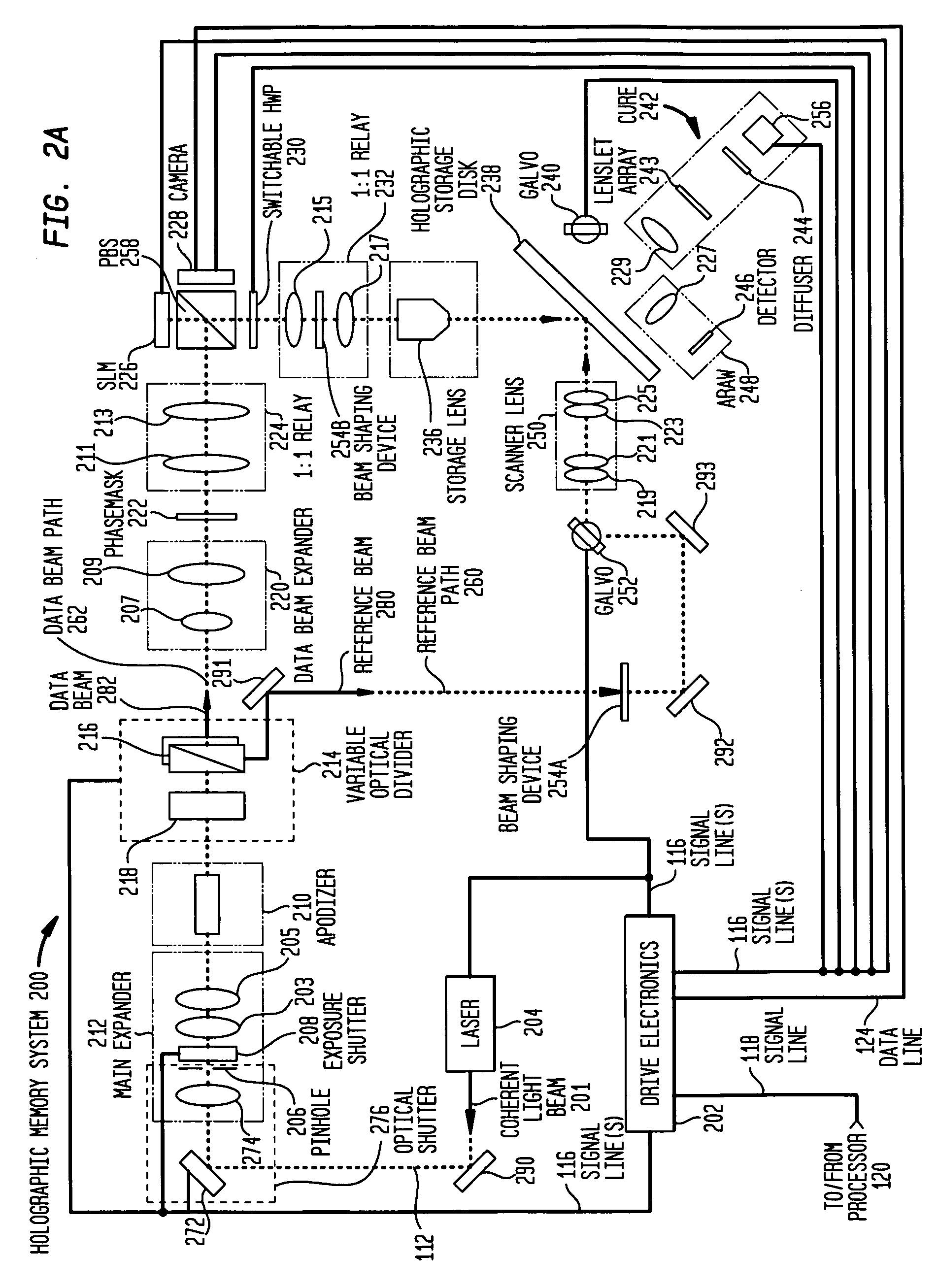For example, the uncured holographic media may not initially
record holograms at all or may
record holograms that are not stable over time.
Uncured holographic media have also been found to exhibit an inherent disadvantageous media response behavior.
These poorer or less than optimal recording properties may be due to a number of factors.
One factor which may adversely affect the ability of uncured holographic media to record holographic data is the presence of
polymerization inhibitors, especially
oxygen, within the medium.
Unfortunately, these free radicals may also preferentially react with any available
oxygen (and / or other inhibitors), rather than the polymerizable components.
Until this reservoir of
oxygen is essentially used up or depleted, the medium may not be able to effectively create the polymers necessary to generate or form the holograms.
Another factor which may adversely affect the ability of uncured holographic media to record holographic data is the rate at which the photoinitiators, polymerizable and polymerized components, etc., diffuse through the holographic medium.
This initial
rapid rate of
diffusion may be so fast that the forming holograms do not become fixed or stable in the medium, but instead degrade or disappear because the
polymer chains generating or forming these holograms simply diffuse into indistinct and unreadable structures.
Even so, the medium may still exhibit a disadvantageous media response behavior in recording holograms for some time because of the rapidly changing rate of polymer diffusion.
As further particularly illustrated in FIG. 4, eventually this disadvantageous response behavior of the uncured holographic medium diminishes as the factors (e.g.,
polymerization inhibitors, rapidly changing diffusion rates, etc.) which cause this disadvantageous response behavior are reduced or eliminated as the cumulative input of energy into the uncured medium increases.
While the transition from the disadvantageous media response region to the relatively advantageous media response region may be partially compensated for by the
holographic data storage system (e.g., by initially using a significantly varying
exposure schedule to record holograms), this may be difficult to achieve in practice due to the rapidly changing nature of the media response and, hence, the relatively high level of uncertainty regarding the required
exposure times. The recording properties of uncured holographic media may be improved according to embodiments of the present invention by subjecting the uncured medium (or at least a portion of the uncured medium) prior to recording of holograms to illuminative curing to provide a pre-cured medium (or pre-cured portion of the medium) having an increased ability to stably record holographic data.
These additional undesired holograms may degrade or impair the ability to read and reconstruct the recorded holographic data by, for example, obscuring the holographic data, significantly decreasing the
signal to
noise ratio (SNR), etc.
It has been further discovered that, after a significant amount of holographic data has been recorded by the holographic medium (e.g., in the range of from about 70 to about 90% of the total
dynamic range has been used), the medium may also tend to record holographic data more slowly and in an a more variable fashion, i.e., the media response curve of the medium is now in another disadvantageous media response region.
By contrast, the level of residual
photoinitiator and / or photoactive polymerizable materials may be sufficiently low, especially after most of the
dynamic range has been used up, to require the use of greatly increased
exposure times to record additional desired holograms having equal or nearly equal
diffraction efficiencies (i.e., a disadvantageous media response behavior).
Conversely, exposure of these recorded photoreactive materials a different second
wavelength of light (i.e., the erasing beam) may cause these recorded photoreactive materials to breakdown and regenerate the photoreactive materials, thus erasing the holographic data.
 Login to View More
Login to View More  Login to View More
Login to View More 


